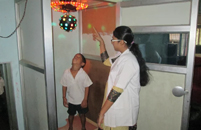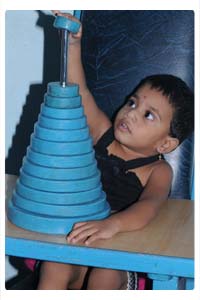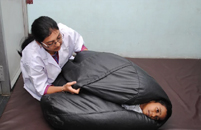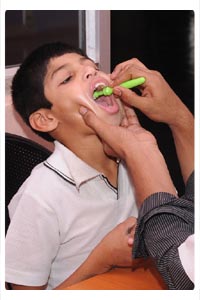Occupational Therapy
What is Occupational Therapy?
Occupational Therapy is a health discipline that evaluates, treats and consults with individuals to restore, reinforce and enhance the capabilities of individuals to cope with the tasks of everyday living that is threatened or impaired by physical and psychosocial illness, injury or disability and developmental delay.
What is the goal of Occupational Therapy?
The goal of Occupational Therapy is to enable people to participate independently and successfully in activities of daily living, work and leisure by increasing functional abilities thereby, enhance the quality of life.
Where does Occupational Therapists work?
Occupational Therapists work in the following areas:
- Pediatrics
- Orthopedics
- Geriatrics
- General Surgery
- Psychiatry
- Neurology
In pediatrics what are the diseases being treated here?
Pediatrics the following diseases are being treated:
- Learning disability
- Sensory Integration problems (SI)
- Cerebral palsy
- Developmental delay
- Attention deficit hyperactivity disorder (ADHD)
- Autism(PDD)
- Asperger's syndrome
- Down's syndrome
How do the Occupational Therapists work?
Occupational Therapists work with the child along with the parents and care givers to assess if the child has difficulties with the practical and social skills.
Occupational Therapists assess the physical, psychological and social functions of the individual in identifying areas of dysfunction and involve the individual in a structured program to overcome disability.
A therapist may work with an individual or in small groups in the classroom and consult with teacher to improve functioning skills of the child.
Therapy is provided when there is a disruption of function in the following areas.
1) Gross Motor skills:- Movement in the hand, trunk and legs. Abilities like Rolling, Running, Crawling, Jumping, Walking, Hopping etc.,
2) Fine Motor Skills:- Movement and dexterity of the hands and fingers abilities like,
- Manipulating small objects
- Reaching
- Carrying
- Shifting small objects
- Pinch
- Grasp
3) Cognitive perceptual skills:- Abilities like
- Attention
- Concentration
- Memory
- Thinking
- Problem solving
4) Sensory Integration:- Sensory processing abilities like
- Proprioceptive
- Vestibular
- Tactile
- Auditory
- Olfactory
- Gustatory
5) Visual motor and visual poceptual skills:- Abilities like
- Copying
- Colour,Shape&Size concept
- Figure match
6) Oro motor skills:- Movement of muscles in the mouth, lips ,tongue and jaw including
- Sucking
- Biting
- Blowing
- Licking
7) Play skills:- To develop age appropriate play skills
8) Socio-emotional skills:- Ability to interact with peers & others i.e.
- Behavior problem
- Eye contact
- Gestures
- Communication
09) Balance & Co-ordination:-To reduce gravitational insecurity and improve balance i.e
- Balance board
- Balance beam
- Obstacle walking
10) Strenth and endurance:-To develop or maximise muscle strength of large and small muscles
- Therapy ball
- Medicine ball etc
11) Splints SPLINTS AND ASSISSTING DEVICES:- Devices to correct or minimise deformity or
- Resting hand splint
- Thumb spika
- Long handed spoon
- Cock-up etc
12) ADL training & self care:- To develop age appropriate ADL skills
- Feeding
- Dressing & undressing
- Buttoning & unbuttoning
- Grooming
- Hygiene
The core value of Occupational Therapy is family-centered care & service.
The needs, desires and values of child & family drive the direction towards assesments & intervention.





